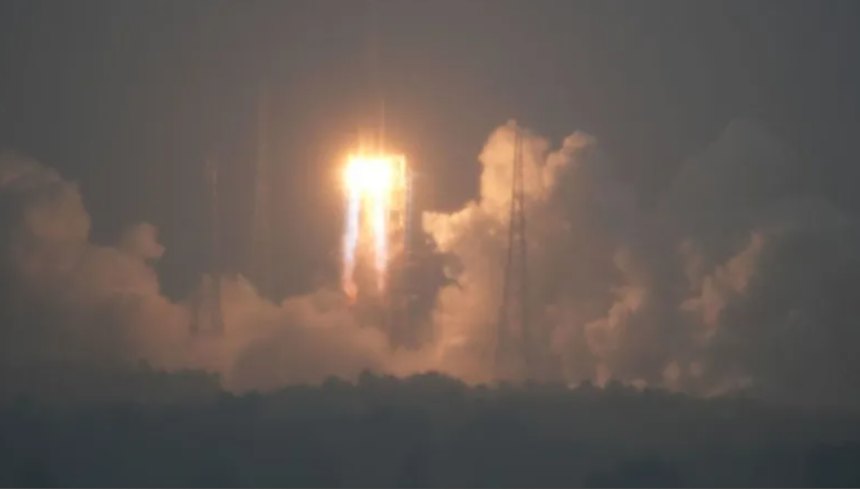China has announced the successful landing of its uncrewed craft on the far side of the Moon, marking a significant achievement in space exploration. The Chang’e 6 spacecraft touched down in the South Pole-Aitken Basin at 06:23 Beijing time on Sunday morning, with the mission aiming to collect rock and soil samples from this unexplored region for the first time in history.
Launched on 3 May, the mission faced numerous challenges, particularly in communication with spacecraft once they reach the far side of the Moon. However, China successfully navigated these obstacles, becoming the only country besides itself to achieve this feat, following the Chang’e-4 mission in 2019.
During the descent, an autonomous visual obstacle avoidance system was utilized to ensure a safe landing, with the lander component using a laser 3D scanner for navigation. The operation was supported by the Queqiao-2 relay satellite.
Chinese state media hailed the successful landing as a historic moment, with celebrations erupting at the Beijing Aerospace Flight Control Center upon touchdown. The lander is expected to spend up to three days gathering materials from the surface, utilizing a drill and mechanical arm to collect approximately 2kg of material.
The South Pole-Aitken basin, where the probe landed, is one of the largest known impact craters in the solar system, offering the opportunity to gather material from deep within the lunar mantle. Scientists hope that analyzing these samples will provide insights into planetary formation processes and the origin of water in the solar system.
China’s ambitions in lunar exploration extend beyond this mission, with plans for three more uncrewed missions in the coming decade to further explore the Moon’s surface and establish a permanent base. Beijing aims to see a Chinese astronaut walk on the Moon by around 2030, aligning with broader global efforts to return astronauts to lunar exploration, including NASA’s Artemis 3 mission scheduled for 2026.



